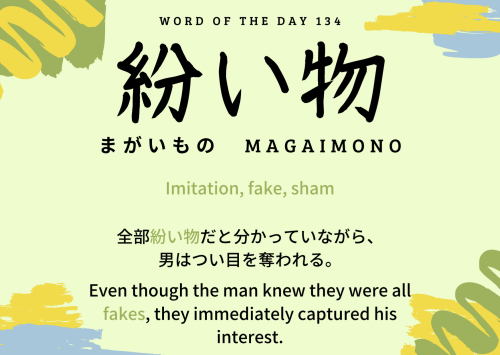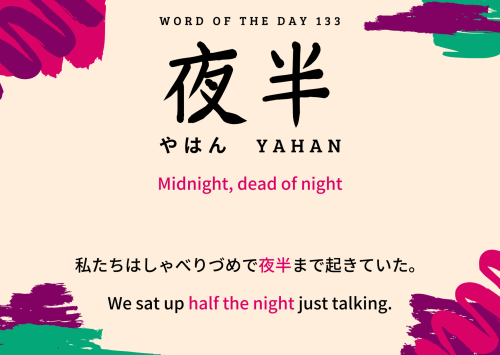#n4 kanji
JLPT Level: Unlisted, but the kanji are N1 and N4 respectively.
Okay, this one is so low frequency you’ll probably never see it. But I like how it sounds so I’m gonna talk about it haha.
紛
- On-yomi: fun
- Kun-yomi: magi.reru, -magi.re, magi.rasu, magi.rawasu, magi.rawashii
- Meaning: distract, be mistaken for, go astray, divert
物
- On-yomi: butsu, motsu
- Kun-yomi: mono
- Meaning: thing, object, matter
So if we put these two together we get “something that one mistakes for something else.” Pretty easy to understand, I think. I wanted to talk about the etymology of the kanji 紛 but I couldn’t find anything. T-T
Post link
JLPT Level: Unlisted, but the kanji are N4 and N5 respectively.
This is a pretty low-frequency word. It sounds pretty old-timey, and it makes sense because I found it in a manga that takes place in the Edo Period haha.
Let’s take a look at the kanji:
夜
- On-yomi: ya
- Kun-yomi: yo, yoru
- Meaning: night, evening
半
- On-yomi: han
- Kun-yomi: naka.ba
- Meaning: half, middle, odd number, semi-, part-
Put them together and you get “the middle of the night.” Pretty easy, right?
Post link
JLPT Level: Unlisted, but the kanji are N4 and N3 respectively.
While not a super common word, you do have a chance of hearing it in conversation once in a blue moon. It’s also incredibly easy to understand once you know the parts.
言い ii, to say
伝え tsutae, to communicate, transmit
So 言い伝え is something that is spoken and transferred from one generation to the next.
Post link



